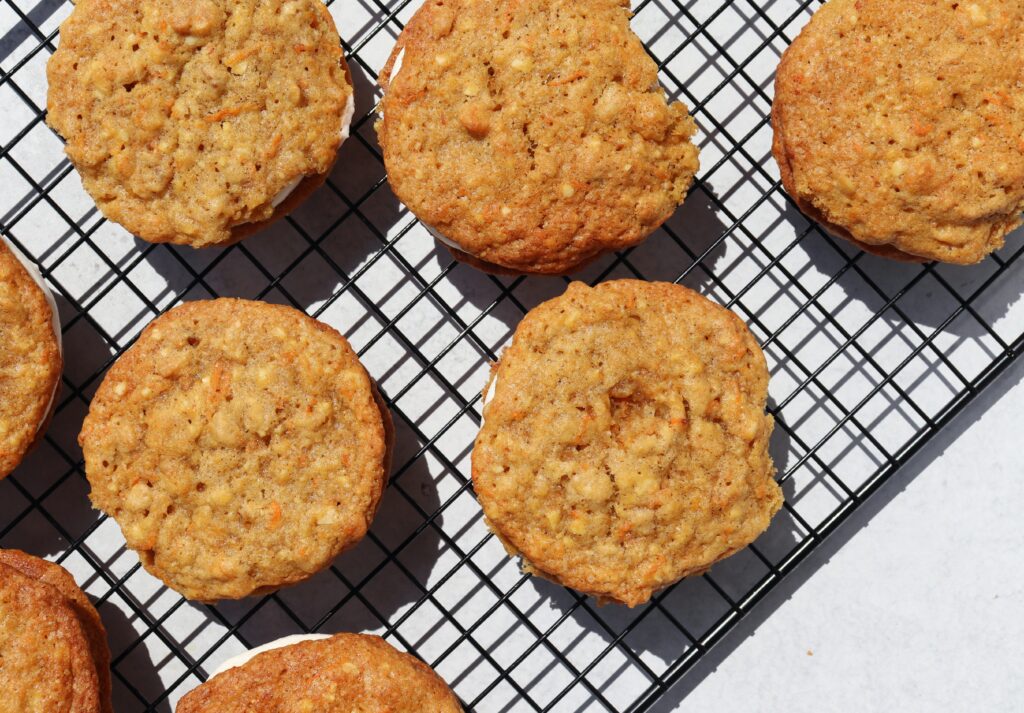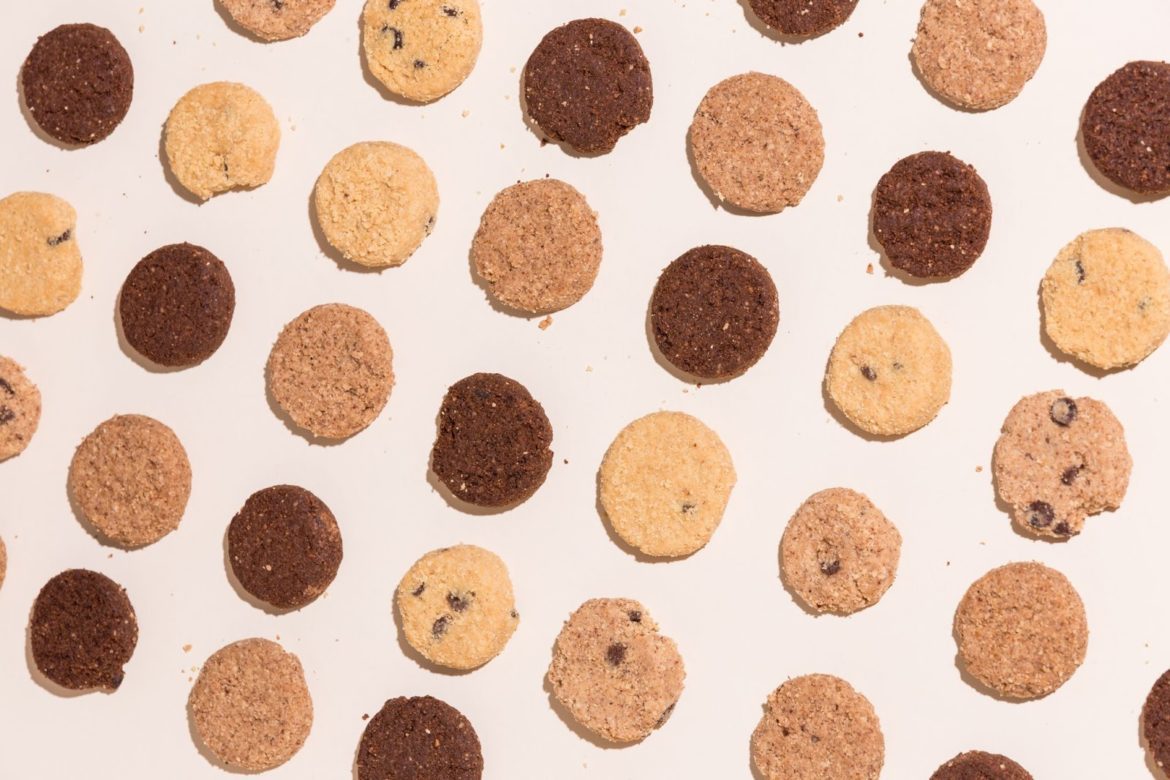Weed brownies achieved legendary status many decades ago when Alice B Toklas published the first recipe for hash brownies in her cookbook. Brownies were most people’s introduction to edibles. They’re the edibles your parents ate, even if they insist they totally never did that.
As the stigma surrounding weed continues to lift, chefs and bakers with a penchant for chilling out continue to incorporate their most powerful herb into new recipes. That’s how we got weed cookies.
If you’re looking to buy a batch of premade weed cookies or whip up your own, here’s what you need to know before you chow down.
How do edibles work?
An edible high is a completely different beast. It has little in common with the high you get from smoking. When you inhale THC, your body uses it right away. You feel it immediately, the effects peak, and the weed cycles down.
When you eat your weed, your body has to process the food that it was in and metabolize the cannabinoids. It can take up to two hours for your body to digest the edible and metabolize the THC into 11-hydroxy-THC, the bioavailable form your liver converts it to.
The end result is a steady, long-lasting high that can ride for as long as eight hours. You don’t need much weed to produce this effect, so the dosage of edibles is very important. Try starting with a 5mg edible and stay there or increase your dosage the next time you use edibles.
Whatever you do, do not double dose edibles. If you take a 5 mg edible and feel like it isn’t working after an hour, it probably hasn’t started to work yet. Taking another one is going to give you a double effect where the highs stack and last for a really long time. This might sound fun, but it’s often too intense. It may cause anxiety or discomfort. The key to edibles is patience.
If you dose right and you’re willing to wait, you’re going to have an excellent time. Just be mindful of the fact that nothing is instantaneous with edibles.
Choosing store-bought weed cookies
You’re probably going to use edibles to have a laid-back night. You worked or studied all week. You just want to kick back and take a Saturday to lounge around or work on a creative project that feeds your soul. If you’re not passionate about baking, you don’t have to make your own weed cookies.
Store-bought edibles will always be easier because you don’t need to do any complicated math. The cannabis brand already appropriately measured and dosed each serving, saving you the hassle of complicated conversions and making your own cannabutter.
Edibles from the dispensary are more than just easy. They’re often extremely inexpensive, all things considered. They’re usually less than $20 for a bag of ten edibles, which will last you and several friends more than one weekend. It’s also much less expensive than what you would spend on ingredients if you don’t happen to have them in the pantry already. Flour, eggs, sugar, butter, pot, vanilla extract, baking soda, chocolate chips — the usual. Premade cookies save you both time and money, especially if you don’t bake regularly.
Edible cookies come in different strains and different flavors. Are you feeling peanut butter? What about cinnamon sugar or chocolate chip? Almost every popular cookie flavor comes in a premade, low-dose edible.
But what about edible pros? Should you eat half a bag of 10mg edibles if you know your tolerance has progressed to the point that a 50 mg edible works just well? You can, but you don’t have to. You can save the calories and carbs by opting for a high-dose cookie that you can break in half. Pick up a 100 mg snickerdoodle and have half on Saturday and half on Sunday.
Going the DIY route
DIY weed cookies start with cannabutter. There are two ways to go about cannabutter. You can buy it from the dispensary or you can make it at home. Both ways come with advantages.
Cannabutter is relatively inexpensive to buy, even if you go the gourmet quality vegan route. It’s not necessarily expensive to make, especially if you already have weed and butter at home. If you’re intimidated by the decarboxylation and infusion process, pre-made cannabutter is your way out.
That having been said, the decarboxylation and infusion process isn’t difficult. Anyone can do it. It just requires a bit of patience, as it’s kind of an all-day project. You’ll spend about an hour turning your bud into decarboxylated bud, and up to five hours total turning that bud into cannabutter. The good news is that you can easily make a huge batch of cannabutter and use it, again and again, to whip up dozens and dozens of edibles at a time, which justifies the work.
This is worthwhile if you don’t want your cookies to be a one-off, but a staple in your pantry. If you’re not fully committed to making your own edibles all the time, it may be better to just grab the premade stuff.

Making cannabutter
In order to activate the cannabinoids in your weed, it needs to be decarboxylated with heat. If you don’t decarboxylate your weed, nothing will happen when you eat it. Heat is what makes your weed potent.
The first thing you need to do is grind your weed. Use a strain you have an accurate THC content for. If you don’t know the THC percentage, you won’t know how to dose your edibles. Pick something with the content on the bag or jar.
Grind it into pieces about the size of grains of rice. Crumple and uncrumple a sheet of aluminum foil and lay it on a baking tray. Evenly distribute your ground cannabis over the baking sheet, and cover it with another sheet of aluminum foil. The crumpled bottom prevents the weed from overheating with contact with the hot tray, and the top sheet protects it from the direct heat of the oven coil.
Place the covered tray on the center rack of your oven at 240 degrees for about 45 minutes. Start checking on it every 5 minutes after the 30-minute mark to make sure it’s toasting up golden without burning.
When it’s done, take it out and let it cool. It’s now decarboxylated and ready to be used in cannabutter.
Then, you’ll need a tea infuser, some butter, and a slow cooker. Vegan butter substitutes or coconut oil will work if you’re dairy-free or plant-based. Calculate the THC percentage of the amount of weed you have. If it’s 25% THC, that means there’s 250 mg of THC per gram. If you want your cannabutter to contain 50 mg per tablespoon, that means you’ll need 5 tablespoons of butter per gram of weed to get your ratio where you want it.
Put your cannabis in a metal tea infuser and put your butter in the slow cooker on the lowest setting, allowing it to melt. When it’s melted, drop in your tea infuser full of weed. Let it slow cook for about four hours, periodically stirring it and moving the infuser around.
When it’s done, pop the infuser out and transfer the cannabutter into a glass jar. Let it cool down on the counter for an hour or so before you pop it in the fridge. If you’re impatient, you can start baking with it right away.
Baking your weed cookies
All you need to do is find a cookie recipe you like and substitute at least some of the butter for your weed butter. Just be mindful of the dosage. Don’t use all weed butter if it means that each cookie will come out at 60 mg. Unless you’re into that.
What if I don’t want to bake, but I still want something fresh?
All you need to do is take your homemade or store-bought cannabutter and melt the number of milligrams you want per batch. You can use premade cookie dough or boxed brownie batter and bake it according to the package instructions. Use a dropper to evenly distribute it on cookies, brownies, or cakes you’ve whipped up from a box mix. You can also drop it onto anything you’ve picked up fresh from the bakery.
The takeaway
When it comes to weed cookies, you have a lot of options. It all depends on the amount of effort you’re willing to put in. Bake up something special if you’re in the mood. Go the homemade cannabutter route if you’re up for a culinary adventure.
If you’d rather keep things simple, just order weed cookies from Emjay. We can deliver them to you in about half an hour. You don’t need to get up off the couch to cure your cravings.
